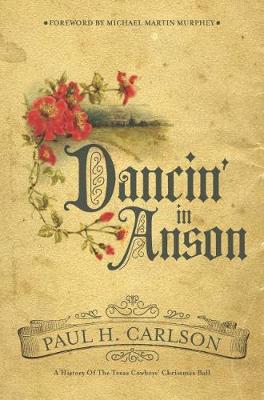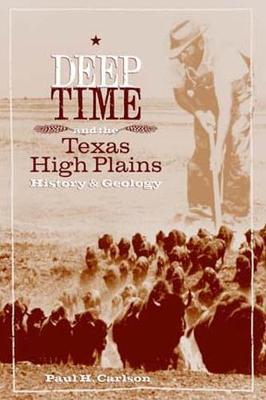Grover E. Murray Studies in the American Southwest
2 total works
In the 1880s, there wasn't much in Anson, Texas, in the way of entertainment for the area’s cowhands. But Star Hotel operator M. G. Rhodes changed that when he hosted a Grand Ball the weekend before Christmas. A restless traveling salesman, rancher, and poet from New York named William Lawrence Chittenden, a guest at the Star Hotel, was so impressed with the soiree that he penned his observances in the poem “The Cowboys’ Christmas Ball.”
Re-enacted annually since 1934 based on Chittenden’s poem, the contemporary dances attract people from coast to coast, from Canada, and from across Europe and elsewhere. Since 1993 Grammy Award-winning musical artist Michael Martin Murphey has played at the popular event.
Far more than a history of the Jones County dance, Paul Carlson analyses the long poem, defining the many people and events mentioned and explaining the Jones County landscape Chittenden lays out in his celebrated work. The book covers the evolution of cowboy poetry and places Chittenden and his poem chronologically within the ever-changing western genre.
Dancin’ in Anson: A History of the Texas Cowboys' Christmas Ball is a novel but refreshing look at a cowboy poet, his poem, and a joyous Christmas-time family event that traces its roots back nearly 130 years.
Re-enacted annually since 1934 based on Chittenden’s poem, the contemporary dances attract people from coast to coast, from Canada, and from across Europe and elsewhere. Since 1993 Grammy Award-winning musical artist Michael Martin Murphey has played at the popular event.
Far more than a history of the Jones County dance, Paul Carlson analyses the long poem, defining the many people and events mentioned and explaining the Jones County landscape Chittenden lays out in his celebrated work. The book covers the evolution of cowboy poetry and places Chittenden and his poem chronologically within the ever-changing western genre.
Dancin’ in Anson: A History of the Texas Cowboys' Christmas Ball is a novel but refreshing look at a cowboy poet, his poem, and a joyous Christmas-time family event that traces its roots back nearly 130 years.
'Carlson writes well in a style that lends itself to an understanding of how man got to the high plains, and what he did once he arrived. Highly recommended reading' - ""New Mexico Historical Notebook"". Humans have visited the Texas High Plains, and in particular the upper Brazos River region, for nearly twelve thousand years. At the site of the Lubbock Lake Landmark in the long Yellow House Draw, they camped, hunted game, and sought shelter from harsh winter weather. In this brief, readable history, Paul H. Carlson surveys the Lubbock Lake Landmarks long geologic past, placing emphasis on human activity in the region and showing how early people adapted to shifting environmental conditions and changing animal resources. Yet this book is more than a history of the Landmark. Carlson places this significant national archaeological site in broad perspective, connecting it to geology and history in the larger upper Brazos River drainage system and, by extension, the central Llano Estacado. Using an interdisciplinary approach, Carlson consulted geological records; paleontological, anthropological, and archaeological reports; astrometrical and climatological studies; and histories of the region to reach back through deep time to explore the significance of the region to life on the Texas High Plains. 'From the edge of eternity ...astronomy, geology, anthropology, and history converge, forming the High Plains. An exciting library addition, classroom guide, or reference book, Paul Carlsons easy-reading study is an adventure for everyone who explores the unique character of the Texas High Plains' - Eddie Guffee, former curator of the Llano Estacado Museum. Paul H. Carlson is professor of history at Texas Tech University. He has published many articles and several books, including ""The Cowboy Way: An Exploration of History and Culture"" (Texas Tech 2000) and ""The Plains Indians"".

